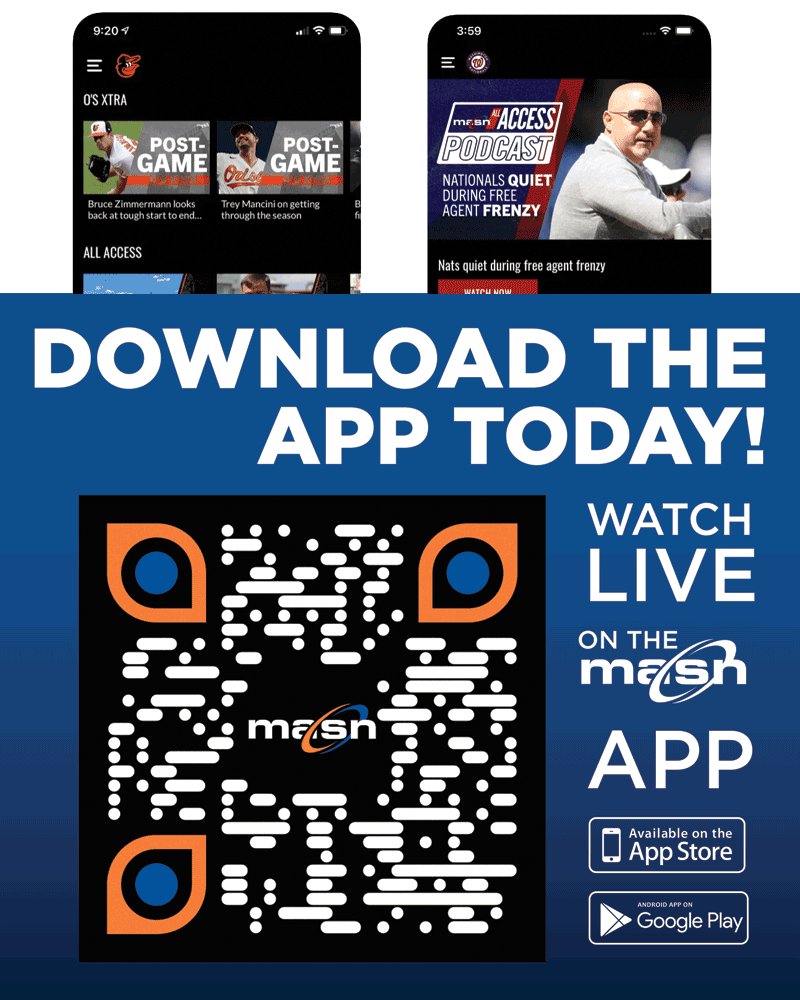Will House's rookie experience lead to improvement in 2026?
PLAYER REVIEW: BRADY HOUSE
Age on Opening Day 2026: 22
How acquired: First round pick, 2021 Draft
MLB service time: 107 days
2025 salary: $760,000
Contract status: Under club control, arbitration-eligible in 2029, free agent in 2032
2025 stats: 73 G, 274 PA, 261 AB, 26 R, 61 H, 11 2B, 0 3B, 4 HR, 29 RBI, 5 SB, 3 CS, 8 BB, 78 SO, .234 AVG, .252 OBP, .322 SLG, .574 OPS, 62 OPS+, 0 DRS, 2 OAA, -0.6 bWAR, -0.3 fWAR
Quotable: “He’s aggressive. He’s going to swing. What we want him to do is hit it in the strike zone. Don’t let the pitcher dictate where you want to swing.” – Miguel Cairo
2025 analysis: The Nationals always hoped to promote House to make his major league debut sometime this season. The only question was when they would make the move, a decision based mostly on his own readiness as opposed to the big league team’s specific needs. By mid-June, House sported a .304/.353/.519 slash line at Triple-A Rochester. And with Jose Tena struggling to hold down third base after Opening Day starter Paul DeJong was struck in the face with a fastball and was sidelined for months, the time had come.
House made his MLB debut June 16 against the Rockies, going 0-for-3 with a walk and a strikeout. And his first month in the majors went pretty well; he hit .279 with six doubles, two homers and 13 RBIs in 28 games while looking very smooth in the field. He wasn’t hitting for much power, but that figured to come at some point along the way.
Except it never really came, and the rest of House’s production dropped as well. Over his final 45 games, he slashed .200/.217/.273 with five doubles, two homers and only 16 RBIs. His defense at third base remained solid, but his strikeout-to-walk ratio (52-to-4 over those 45 games) was alarming. Right or wrong, Cairo often opted to start DeJong at third base over the rookie, even though the former didn’t figure into the team’s long-term plans.
2026 outlook: The best thing that can be said about House’s rookie season is that he got a good opportunity to get his feet wet at the big league level. It needed to happen eventually, and even if he wasn’t 100 percent ready for it, the experience hopefully was good for him in the long run.
That said, he’s got a long way to go to live up to his potential. House’s No. 1 offensive tool has always been his power bat. He slugged .453 across 1,466 plate appearances as a minor leaguer. Maybe it was too much to expect that to immediately translate as a major leaguer, but the drop-off was pretty staggering and didn’t really improve as the season progressed.
House’s two biggest issues? He didn’t make enough contact, and when he did, he didn’t hit the ball in the air enough. He swung at a whopping 57.2 percent of all pitches seen (10 points higher than the MLB average), but he made contact only 69.1 percent of the time (six points lower than the MLB average). He swung at the first pitch of an at-bat 50.7 percent of the time (MLB average: 30.1 percent). And his chase rate outside the strike zone was 36.8 percent (MLB average: 28.4 percent).
When he did make contact, House did make decent contact. His hard hit rate of 46.3 percent was well above the league average of 37 percent. But his ground ball rate was 46.3 percent, and he only pulled the ball in the air 10.6 percent of the time (MLB average: 16.7 percent). Plain and simple, he needs to be more patient, swing at strikes and pull the ball in the air with more regularity.
Given the Nationals’ current situation, it would seem like House is assured of more playing time and more experience going into 2026. But the club shouldn’t just hand him the job and live with the results no matter what. The organization’s 2021 first round pick needs to show real improvement over the course of his first full big league season in order to convince everyone he still deserves to be considered part of the long term plan.
